The U.S. National Transportation Safety Board has given the first glimpse of conditions of the MV Dali after it allided with the Francis Scott Key Bridge, showing teams searching for chemical leaks, hidden fires, and inspecting damage.
National Transportation Safety Board (NTSB) investigators and U.S. Coastguard boarded the container ship MV Dali on Wednesday to inspect damage and retrieve data from the onboard recorder to form part of their investigation. The Board has now released a series of photographs and video from those visits, giving an insight into the level of damage sustained by the ship — which is to be freed, refloated, and recovered by U.S. Army engineers and a specialist salvage firm — in the impact.
An important part of the early investigation is ascertaining whether a wider threat may be posed by hazardous materials loaded aboard the Dali, which according to the manifest are present in 56 of the 4,700 shipping containers aboard. In the footage NTSB investigators are seen using thermal cameras, likely to detect hidden chemical reactions or fires deep inside the cargo containers that may have been set off by the crash, and a portable get detector to find potential leaks.
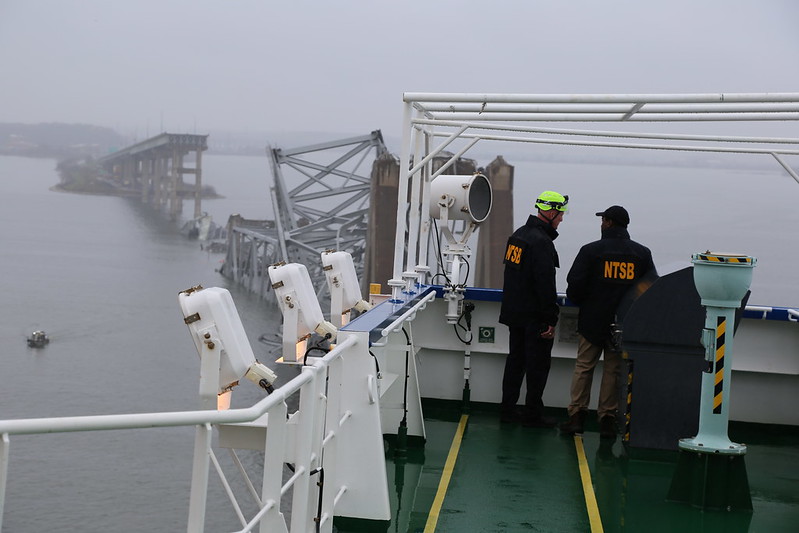
Investigators stand on the bridge wing of the MV Dali and look out at the twisted remains of the Baltimore harbour bridge / Peter Knudson/NTSB
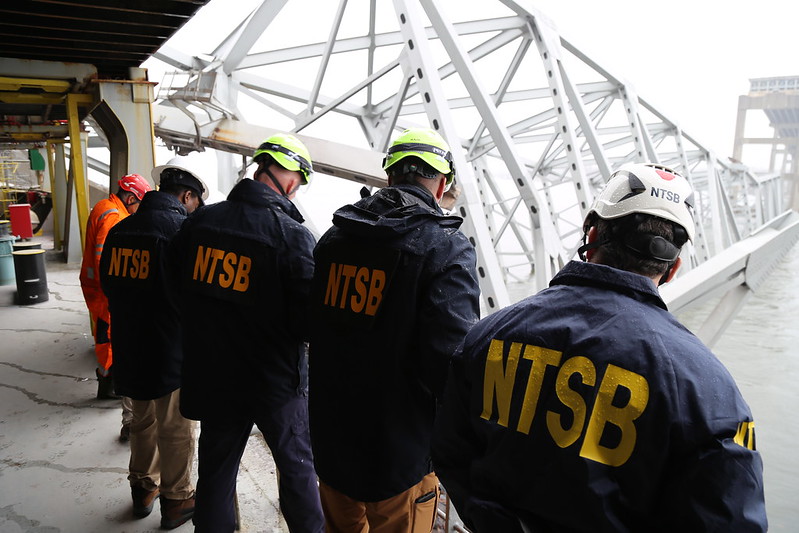
Investigators stand on the waist of the MV Dali and look out at the twisted remains of the Baltimore harbour bridge / Peter Knudson/NTSB
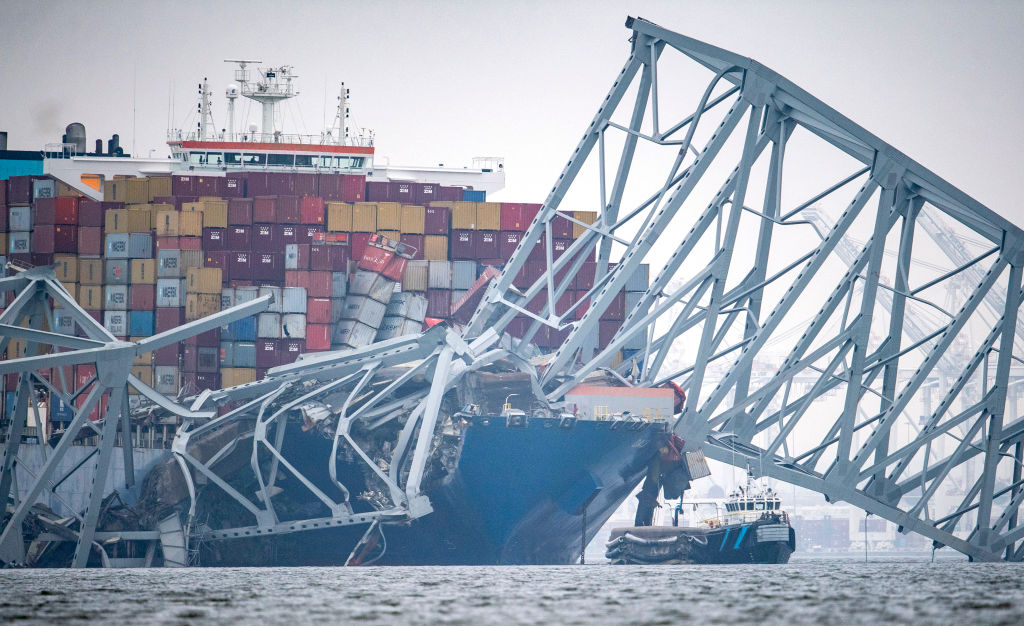
BALTIMORE, MD -MARCH 28: Authorities are turning their focus to “salvage” operations to remove wreckage from the Patapsco River after the massive container ship, Dali, caused Baltimore’s Key Bridge to collapse on March 28, 2024. (Photo by Jonathan Newton/for The Washington Post via Getty Images)
The handheld gas sniffer used by one investigator is a sophisticated model that wirelessly alerts a remote base station when alarms of high gas concentrations are triggered, in case the investigation team has already been overpowered by dangerous chemicals or vapours.
As the investigators go inside the ship, the extent of damage to its structure from the impact, the bridge falling on the bow of the ship, or both is clearly visible. In one internal compartment, the deck is ruptured and spatter on a nearby bulkhead indicates the force of the break. Oil or chemical contaminant is visible on the deck and considerable debris that appears to have fallen from above is scattered.
The visible damaged containers and cargo in the fore part of the ship on deck is illustrative of a typical container ship and the very global nature of the industry. Beyond rolled-out firehoses and large amounts of concrete rubble and twisted steel are at least two badly dented black oil-type drums, whose labels say they originated from Shanghai with the SI Group, a Texas-based chemical company with operations in China.
An apparently torn-apart shipping container nearby is marked IC33, meaning it was originally certified as safe for use by Chinese State Railways. Nearby are several bulk chemical containers, one marked UN1993, meaning it carried class three flammable liquids.

Investigators and a Coast Guard Captain stand on the bridge wing of the MV Dali / Peter Knudson/NTSB
In the wheelhouse, the roving camera of the NTSB captures one of their investigators insert a USB stick into the ship’s voyage data recorder terminal to download data and a Coast Guard Captain wearing the silver eagle of his rank discusses the situation with investigators on the bridge wing.
While the investigation continues, the recovery effort begins. What has been called “the largest crane on the Eastern Seaboard” has been delivered to Baltimore by barge to begin the work of clearing the central shipping channel. Dredged to 44 feet in comparison to 15 to 20 feet elsewhere around, the Fort McHenry channel which passed under the highest point of the old bridge and which the MV Dali missed is the only navigable water in the Patapsco for large cargo ships, or will be once the wreckage is removed.
Called the ‘Chesapeake 1000’, the large 1,000-ton lifter was guided to the bridge by two tugs overnight. Per the Associated Press, Maryland Governor Wes Moore said “the best minds in the world” are working on how to clear the channel fast. He said: “This is not just about Maryland… This is about the nation’s economy. The port handles more cars and more farm equipment than any other port in America.
Images from Baltimore show the Chesapeake 1000 joins another crane already deployed to the bridge, a regular tracked construction vehicle driven onto a large barge.
Despite the mobilisation of support from the Federal government and military, Moore reflected “We have a very long road ahead of us”.
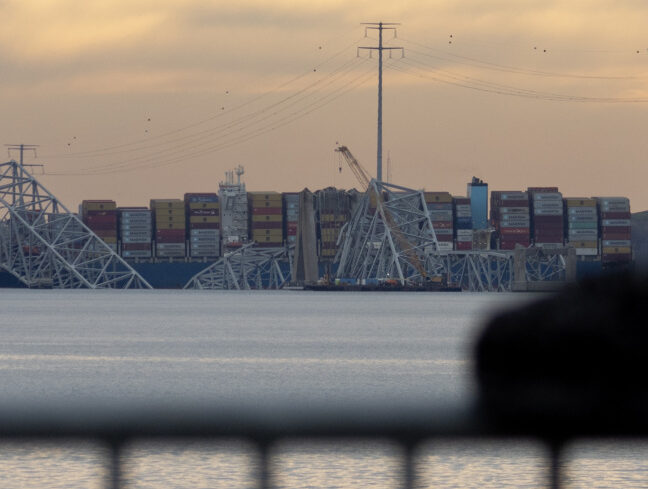
BALTIMORE, MARYLAND – MARCH 28: People watch as the sun descends beyond the collapsed Francis Scott Key Bridge on March 28, 2024 in Baltimore, Maryland. The bridge, used by roughly 30,000 vehicles each day, fell into the Patapsco River after being struck by the Dali, a cargo ship leaving the Port of Baltimore at around 1:30 a.m. Tuesday morning. The bodies of two men who were on the bridge at the time of the accident have been recovered from the water, with four others still missing and presumed dead and two others rescued and treated for injuries shortly after the accident. The Port of Baltimore, one of the largest and busiest on the East Coast of the U.S., is temporarily closed. (Photo by Scott Olson/Getty Images)
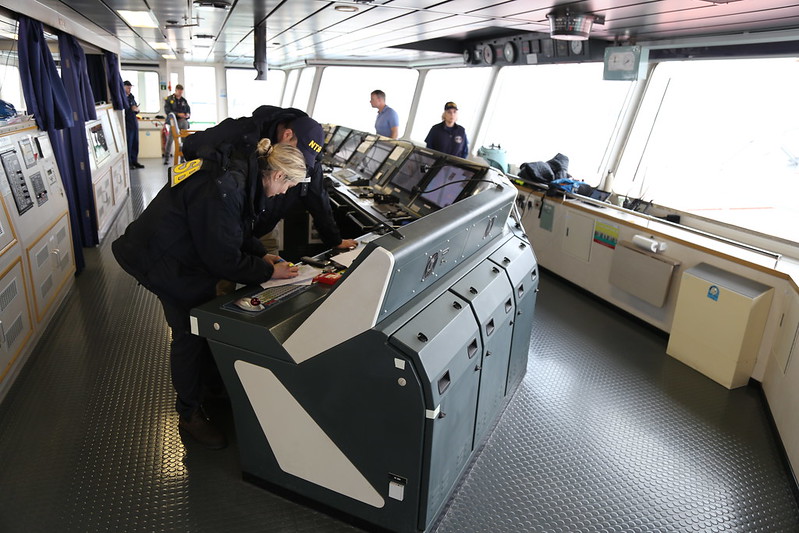
COMMENTS
Please let us know if you're having issues with commenting.